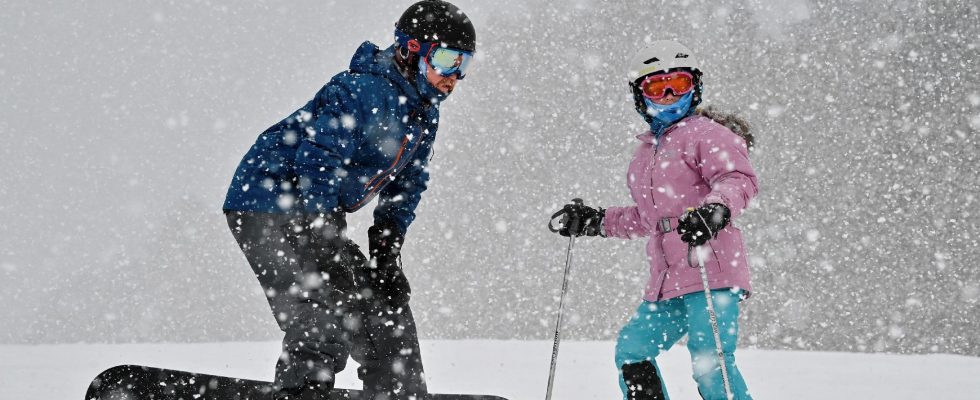Will snow holidays become rarer in the future? According to a study published on Monday August 28, the current climate change will represent a considerable challenge for European ski resorts, even if they resort to artificial snow, which also generates problems of water consumption and ‘energy.
Half of the world’s ski resorts are located in Europe, where they generate an annual turnover of more than 30 billion euros and represent a very important godsend for local economies, even if it only represents 3% of global direct receipts linked to tourism in Europe, specifies this study published Monday in the scientific journal Nature Climate Change.
A study in 28 different countries
Its authors studied 2,234 stations located in 28 different European countries, ranging from Turkey to Iceland via the Balkans, Scandinavia, the Carpathians and the Alps with two scenarios, one assuming a global warming of 2° C and the other 4°C.
“This study shows that in all mountainous regions of Europe, future climate change will lead to degraded snow conditions compared to previous decades, although they will vary from region to region and within regions”, notes one of the authors, Samuel Morin, researcher in snow physics.
Snowmaking contributes to accelerating climate change
Without using artificial snow, it appears that 53% of resorts would face a “very high” risk of a lack of snow if the rise were 2°C. With a rise of 4°C, almost all stations (98%) find themselves in this situation. By resorting to the production of artificial snow, the proportion of resorts at risk would drop to 27% (increase of 2°C) and 71% (4°C).
But artificial snow has “little effect” in areas at low altitude or located too far south, the temperatures being too high not allowing snow to be made effectively.
In addition, snowmaking can itself contribute to the acceleration of climate change because of the high energy demand it induces, notes the article. It also results in an increase in the demand for water, she points out.
https://www.youtube.com/watch?v=undefined
“More targeted policies”
In the end, the main message of the study to decision-makers, “is that yes, snow production can support the adaptation of winter sports resorts and have a direct effect on the operating capacity of ski areas. But this solution is not generic, it is not a miracle solution that we will be able to apply everywhere in a systematic way”, explains to AFP the main author of the study, the Grenoble researcher Hugues François. “The most important thing to take into account is the heterogeneity” of the cases, including within the same massif, he underlines. The challenge for decision-makers is to “move towards more targeted policies”.
In France, for example, “the ski lifts are a public service”, which means that “skiing is very political”. “There are few regions in Europe in which the public authorities intervene as strongly as in France”.
To this model, Switzerland and Austria, two other major ski countries, prefer “forms of development piloted by local unions, under private law, with an often more pragmatic and on-the-ground approach”, believes he.
